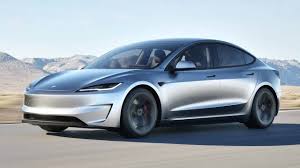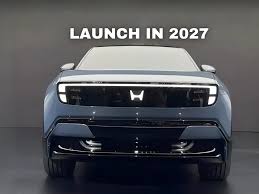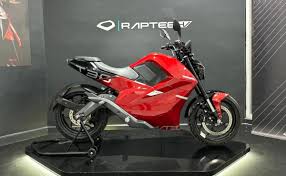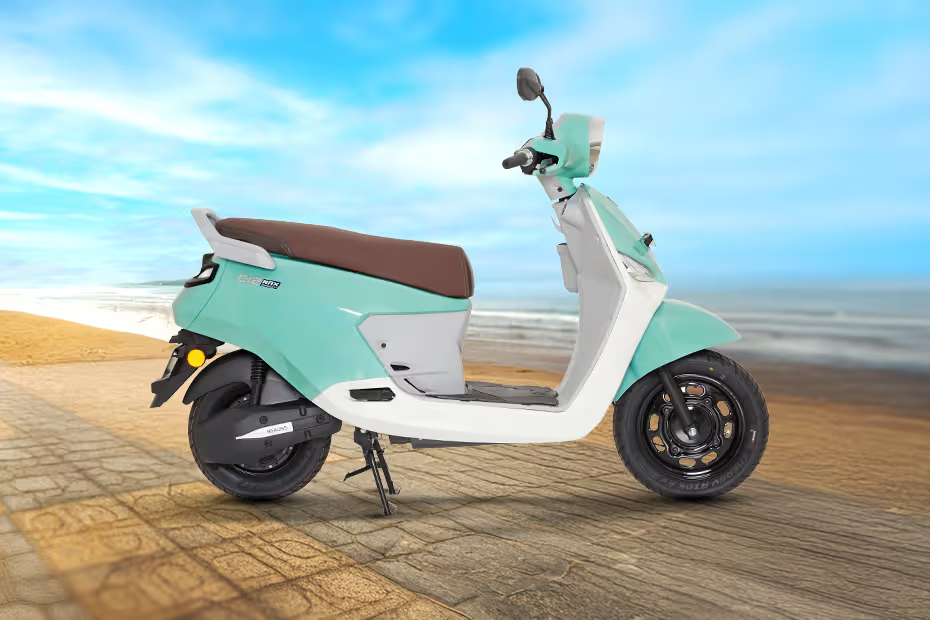Introduction
In the rapidly changing landscape of electric mobility, one name has lingered in rumours and conjecture for almost a decade — Apple car. The technology behemoth that revolutionized communication with the iPhone. Now, with mounting leaks and insider tips, the dream of an Apple-built car is no longer simply an idea — it’s on its way to becoming one of the most highly-awaited debuts in recent motor history.
Establish a tone:
- The Apple Car is more than simply another EV — it’s being conceptualized as “the iPhone of cars.”
- Industry observers think Apple’s entry may redefine what a car is all about — moving away from horsepower and torque towards intelligence, design, and ecosystem integration.
- The issue now is no longer whether Apple can do it, but how aggressively it will pursue reinventing itself.
Project Codename — “Project Titan”:
- Apple’s mysterious automotive endeavour began sometime in 2014 under the internal codename “Project Titan.”
- It has had several career changes over the years — from the vision for a fully autonomous vehicle to an EV software focus, and back to a whole-car idea again.
- Dozens of big-name Tesla career changers from Porsche, Ford, and Mercedes-Benz signify Apple’s serious intention to join the EV fray.
Global Anticipation:
- The Apple Car is already a cultural phenomenon before it even hits the stage, with fans, investors, and auto pundits analyzing each leak and patent.
- Its possible effect on the auto and technology industries is likened to how the iPhone revolutionized personal tech back in 2007.
- In Silicon Valley, in Seoul, the globe is biding its time — looking for the moment Apple finally turns its mythical “One More Thing…” into the next revolution on wheels.
The Vision Behind Apple Car
In the center of Apple’s car dream is the same philosophy that has driven every cutting-edge product it has ever made — simplicity, privacy, and a silent integration. Apple’s vision is not to make another electric car; it’s to build an experience — a place where technology advances disappear seamlessly into design, where software and hardware come together to serve the driver with ease. Just as the iPhone transformed communication into an art form, the Apple Car is designed to transform mobility into an extension of the digital lifestyle — intuitive, intelligent, and personal.
Convergence of Technology, Sustainability, and Luxury Mobility:
- Apple wants its EV not only to be a car but a “smart environment on wheels.” All surfaces, sensors, and noise will likely be integral to an ecosystem that responds to its users’ preferences and patterns.
- Sustainability will be a strong pillar — using recycled materials, renewable energy manufacturing processes, and long-life battery technologies, complementing Apple’s 2030 carbon-neutral target.
- Look for an opulent, simple interior that facilitates human-machine interaction through gestures, voice, and augmented reality rather than buttons or crowded controls.
- The driving experience is said to center around comfort, safety, and emotion — so that the Apple Car would feel less like a machine, and more like a companion that knows you.
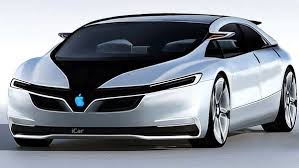 Comparison with Tesla’s Vision of “A Computer on Wheels”:
Comparison with Tesla’s Vision of “A Computer on Wheels”:
- Tesla reinvented the car as a connected product — an intelligent computer that can drive itself and update over the air. Apple will advance that vision even more, infusing its custom chipsets, artificial intelligence, and services into every aspect of the car.
- While Tesla is engineering-driven and performance-oriented, Apple’s strength is integration and user experience — integrating the car with iPhones, Apple Watches, and HomePods to form a single ecosystem.
- Privacy — Apple’s hallmark value — might redefine how automotive data is used so that personal driving information remains encrypted and under user control, setting a new industry standard.
- In other words, while Tesla created the “machine that drives itself,” Apple aims to create the “machine that knows you.”
Journey of Project Titan
The story of the Apple Car, known internally as Project Titan, reads like a decade-long technological odyssey — full of ambition, secrecy, and reinvention. Titan on life support — a reminder that the company is convinced the future of mobility lies with those who can integrate design, data, and drive into a single fluid experience.
2014 – The Birth of Project Titan:
- Speculation began in 2014, when Apple reportedly assembled a 1,000-member team to develop an electric vehicle.
- The project was approved under the leadership of Steve Zadesky, a veteran iPod and iPhone team member, as Apple’s most ambitious hardware foray since the dawn of smartphones.
- Spotted test vans with cryptic Apple branding and leaked papers teased that Cupertino was secretly developing the future of transit.
2016–2019 – Shifting Gears Toward Autonomy:
- Leadership shakeups caused disruption — multiple senior executives departed or were relocated as Apple struggled to articulate its purpose.
- Attention shifted from developing a whole car to creating autonomous-driving technology and AI-powered navigation tools.
- Apple started testing autonomous prototypes on California roads under DMV permits, joining the ranks of Google’s Waymo and Tesla.
- Although there were setbacks, these years helped Apple collect vast amounts of data and gain experience with sensors, computer vision, and machine learning.
2020–2023 – The Return to a Complete Electric Vehicle:
- Project Titan was revamped under new leadership by Doug Field (former Tesla VP of Engineering) and, subsequently, by Kevin Lynch, who led Apple Watch development.
- There were rumours that Apple was now set to make a full-fledged EV branded entirely, not merely software, with a bespoke chip and design of its own.
- Apple began negotiating with international automakers such as Hyundai, Kia, and Nissan to secure manufacturing tie-ups for mass production.
- Test mules featuring sophisticated LiDAR and neural processors indicated Apple’s AI-based driving system was close to maturity.
2025–2026 – Production and Launch Targets
- Industry pundits now predict a 2026–2027 launch window, in line with Apple’s current R&D cycles.
- The company’s objective is said to have been revised from an entirely driverless vehicle to a semi-autonomous premium EV, focusing on innovation within the realm of practicality.
- Apple’s mysterious Japanese, Taiwanese, and US suppliers are reportedly developing dedicated components, including solid-state batteries and high-performance EV chipsets.
- Early prototypes are said to be undergoing testing at Apple’s secret track in California — potentially the last leg before production readiness.
Key Executives and Partnerships:
- The initiative has attracted the best brains from both the automotive and technology industries:
- Doug Field (Tesla, Ford), Kevin Lynch (Apple Watch), Benjamin Lyon, Steve Zadesky, and Ulrich Kranz (BMW i3 program).
- Partnerships with companies such as Foxconn, TSMC, LG Magna e-Powertrain, and CATL suggest a global supply chain ecosystem poised to support Apple’s EV plan.
- Every partnership adds weight to Apple’s hardware accuracy, software smarts, and top-shelf manufacturing quality.
Challenges Encountered Along the Way:
- Continuous leadership changes and strategic shifts slowed down the journey, raising doubts even within Apple itself.
- Technical hurdles surrounding breakthroughs in battery technology, autonomous safety, and AI dependability stalled real-world validation.
- Regulatory environments for self-driving cars were also found to be complicated, particularly in the U.S. and Europe.
- Still, Apple’s systematic approach — safety, privacy, and perfection first — continues to guide Project Titan toward becoming a possible industry disruptor.
Design Philosophy
If there’s one thing that defines Apple, it’s design — the art of making technology disappear into simplicity. Where every curve, surface, and interface serves a purpose. Rather than congested dashboards and engineering wizardry, Apple is imagining a cabin that is serene, intuitive, and intelligent — a refuge of light, movement, and quiet. Essentially, it won’t simply appear like an Apple-designed automobile; it will be an Apple device you can drive.
Speculated Design Inspirations — A Preview of the Future
- Leaks and concept reports indicate Apple is working on a steering-wheel-free cabin, managed instead by voice commands, gestures, or self-driving systems.
- The panoramic glass roof — stretching from the hood to the top — might demarcate boundaries between the exterior and the interior, providing an almost spaceship-like view.
- Early patents show an augmented reality (AR) windshield that can project navigation directions, hazard notifications, or even FaceTime calls onto the glass itself.
- The design philosophy is thought to combine Scandinavian minimalism with Silicon Valley futurism, resulting in a car that’s emotionally calming but technologically vibrant.
- In keeping with Apple’s DNA, hard buttons will be all but eliminated — in their place, haptic feedback surfaces, ambient light, and context-aware controls that pop up only when required.
Collaborations with Design Studios and Suppliers:
- Apple has reportedly partnered with a group of international automotive designers and partners to hone its vision further.
- Foxconn, Apple’s longtime manufacturing partner, is said to contribute assembly infrastructure and EV-centric expertise.
- LG Magna e-Powertrain, the LG Electronics-Magna International JV, is one of the largest potential drivetrain and chassis partners.
- Negotiations with Hyundai and Kia also emerged as evidence of Apple’s interest in tapping their electric platforms for mass production, although the company has maintained a formal silence.
- Sources speculate Apple’s industrial design department, under the command of former Jony Ive collaborators, is collaborating with aerodynamics experts and UX designers to create a car that is as beautiful as it is efficient.
Potential Body Type — Between Sedan and Crossover
- Although Apple has not officially announced the form factor, industry speculation suggests it will be a luxury electric sedan or a compact crossover, striking a balance between performance and city practicality.
- An aerodynamic, low-slung profile would optimize battery efficiency and Range while retaining a premium, future-looking shape.
- The crossover possibility might tap into the fastest-growing segment of the global EV market, enabling Apple to compete head-to-head with the Tesla Model Y, Polestar 3, and Mercedes EQE SUV.
- No matter which route Apple goes, the design will focus on comfort, visibility, and digital harmony — making every seat an experience akin to first class.
Technology & Features
At the heart of the Apple Car is its signature promise — intelligence-fueled autonomy. Apple doesn’t want to make driving simpler; it wants to make automobiles think, feel, and move with human-like accuracy. Rumour has it that Apple is aiming for Level 4 or even Level 5 autonomous capability, in which the car might drive on its own under most or all circumstances without a driver. This jump ahead would put Apple at the forefront of AI mobility, pairing the maturity of its homebrew silicon chips with decades of software expertise. The Apple Car isn’t being imagined as mere transport — it’s a self-moving supercomputer that learns, adjusts, and adapts to its driver.
Integration with the Apple Ecosystem
- The Apple Car will likely function as an extension of the current Apple ecosystem, integrating smoothly into users’ devices and services.
- From iPhones and Apple Watches to iCloud and HomePods, all aspects of the Apple experience will probably integrate with the car — turning it into a connected lifestyle capsule on wheels.
Apple ID-Based Profiles:
- All Apple Cars will apparently identify their owner via their Apple ID, personalizing settings the moment they get in.
- The car might automatically adjust seat location, lighting, climate, upcoming, and navigation settings based on the driver’s profile.
- Shared vehicles within fleets or families would remain private and personal to each driver, echoing Apple’s device-level personalization approach.
Siri, Apple Maps, and Apple’s upcoming Integration
- Apple’s AI assistant, Siri, will likely be the primary interface, managing navigation, phone calls, entertainment, and car controls via natural-language voice commands.
- Apple Maps — already enhanced with 3D visuals and real-time traffic insights — will drive next-generation navigation with predictive routing and AR windscreen overlays.
- Apple’s upcoming and Apple TV+ integration will turn the car into an entertainment center, providing immersive sound via spatial audio and seat-based acoustic zones.
iPhone-as-Key Functionality:
- Just like Apple Wallet’s digital car key feature, the Apple Car will allow users to unlock, start, and share access through their iPhone or Apple Watch.
- The system may also enable proximity recognition, where the vehicle welcomes the user with adaptive illumination and self-unlocks on approaching.
- For security purposes, access will likely be secured with Face ID or Touch ID, keeping the private even in multi-user applications.
Potential Software: “carOS” or “Apple DriveOS”:
- Apple is said to be developing a dedicated operating system, often called “carOS” or “Apple DriveOS.”
- Founded on the same architecture as macOS and iOS, it will combine real-time navigation, vehicle health, entertainment, and cloud services into a seamless interface.
- Look for an immersive dashboard with adaptive widgets, voice-first access, and deep integration with Apple’s ecosystem — essentially making the car act like an iPhone on wheels.
Advanced AI-Based Safety, LiDAR Sensors, and 360° Awareness
- Apple’s emphasis on AI-based safety extends beyond autonomous; it’s about making a car that is always looking out for danger.
- Several LiDAR, radar, and ultrasonic sensors will provide 360-degree environmental perception, enabling millimetre-precision sensing of pedestrians, cars, and roadblocks.
- In-car AI technology may track driver tiredness, heart rate (via Apple Watch), and attention levels — helping avert crashes before they occur.
- Apple’s custom silicon, potentially named the A-series Mobility Chip, will handle real-time camera and sensor data quickly than any other current automotive processor.
- The outcome: a car that’s not only self-driving but also empathetic — knowing the driver’s state of mind, the environment, and intentions.
Battery & Performance
The company is aiming to develop proprietary battery technology that will achieves a high active-material volume by removing conventional modules, providing more power in less space. Industry watchers also look to Apple’s extensive research on solid-state batteries — a technology that might significantly lower charging time, increase range, and improve safety. As with all things Apple, performance is not so much about speed or figures — it’s about efficiency, quietness, and responsiveness where control becomes art that redefines the premium electric driving experience.
Projected Range
- Initial estimates suggest the Apple Car could deliver 450-600 km of real-world driving range per charge, comparable to top EVs such as the Tesla Model S and the Lucid Air.
- Apple is investigating high-voltage fast-charging systems that can get up to 80% capacity in less than 20 minutes, with intelligent heat management to guard battery life.
- A proprietary battery optimization algorithm, in conjunction with carOS, can dynamically control power delivery based on terrain, temperature, and user behaviour.
- Regenerative braking will probably be marked by Apple’s signature smoothness, recovering energy without affecting ride quality.
- Upcoming models could even enable bi-directional charging, charging homes or devices — a testament to Apple’s sustainability ecosystem.
Collaboration with TSMC or CATL for EV Chipsets and Power Units:
- Apple’s iconic chip partner, TSMC (Taiwan Semiconductor Manufacturing Company), is reported to be working on custom silicon for the Apple Car under the moniker “A-Mobility” chip.
- The chip would encompass everything from battery management and motor control to AI-enabled energy optimization, delivering maximum performance with very little loss.
- On the battery supply side, Apple has been in deep talks with CATL and BYD — the world leaders in lithium-iron-phosphate (LFP) and solid-state technology.
- Partnerships can also include Panasonic or LG Energy Solution for initial production runs, before Apple switches to fully in-house solutions.
- All partnerships indicate Apple’s approach of tight vertical integration, much like how it designs chips, manufactures hardware, and owns its whole ecosystem.
Performance Expectations vis-à-vis Tesla, Lucid, and Mercedes EQS:
- Performance benchmarks indicate that Apple plans to directly compete with Tesla’s Model S Plaid, Lucid Air, and Mercedes EQS — models noted for combining power with luxury.
- The Apple Car is likely to achieve 0–100 km/h acceleration in less than 4 seconds, supported by a dual-motor or tri-motor configuration.
- While Tesla’s edgy power delivery is all about aggression, Apple’s tuning philosophy might focus on linear torque, noise cancellation, and silky handling dynamics — comfort and control over sheer aggression.
- AI calibration and next-generation thermal systems will provide consistent performance, regardless of weather or road conditions.
- Really, while everyone thinks of horsepower, Apple’s advantage will be intelligence — performance that thinks as quickly as it moves.
Manufacturing & Partnerships
For Apple, the transition from consumer electronics to cars involves not just innovation but also unprecedented industrial collaboration. Because Apple does not currently have experience producing large volumes of vehicles, the company depends on forming alliances with experienced automakers and niche contract manufacturers. Long term, rumours have hinted at partnerships with Hyundai, Kia, and Foxconn — all proposing specific advantages in electric vehicle platforms, precision manufacturing, and scale production. As in true Apple fashion, though, each partnership is done with utmost discretion, with the company keeping firm rein on its design, engineering, and supply chain to ensure that the Apple Car is unambiguously “Designed by Apple.
Speculated Production Partners:
- Early reports suggested Apple was in advanced talks with Hyundai Motor Group and its subsidiary Kia, exploring co-development using Hyundai’s E-GMP (Electric Global Modular Platform).
- Kia’s state-of-the-art facility in Georgia, USA, was rumoured to be a potential assembly site for the first batch of Apple Cars.
- Subsequent leaks indicated that Foxconn, Apple’s long-standing manufacturing partner, had just entered the EV market with its MIH open platform, offering flexibility for Apple’s own designs.
- Other prospective partners are Magna International, a Canadian automotive parts maker that specializes in contract manufacturing high-end vehicles like the Jaguar I-Pace.
- Apple’s strategy is similar to its hardware strategy: outsource mass production but have full control over design, software, and brand experience.
Assembly Location Options (U.S. or International Expansion, Including India):
- Apple can keep U.S.-based assembly as the top priority in the first phase, as it is committed to domestic manufacturing and sophisticated automation.
- California and Georgia have been mentioned as initial production and testing locations, given Apple’s deep American engineering presence.
- But in the long term, plans might include global assembly centers, especially in India and Southeast Asia, where Apple is expanding iPhone manufacturing.
- India, through its Make in India policy, offers a low-cost, strategically located hub for Apple to increase production and capitalize on one of the globe’s most rapidly growing EV markets.
- This international production network would enable Apple to contain costs, reduce geopolitical risks, and achieve faster worldwide rollouts once mass production begins.
Supply Chain and Sustainability Focus — Apple’s Carbon-Neutral 2030 Goal
- Apple’s whole supply chain is being redesigned under its 2030 carbon-neutral plan, and the Apple Car will not be left behind.
- The car’s production could incorporate recycled aluminum, rare-earth metals, and eco-certified materials, just as the sustainability push introduced in recent MacBook and iPhone generations.
- Apple will engage with suppliers who pledge to get 100% of their electricity from renewable sources, which means pressuring partners such as Foxconn, LG, and CATL towards cleaner manufacturing.
- Battery recycling and closed-loop material recovery will be key, cutting the environmental footprint and reliance on raw mining.
- The company’s ultimate aim is to make the Apple Car not just technologically advanced, but also ethically produced—a zero-emissions product conceived through a zero-emissions process.
Pricing & Market Positioning
Apple is effectively redefining the term “premium mobility” when it effectively enters the EV market. Apple Car is estimated at $75,000 to $100,000, effectively positioning it in the luxury EV market — going head-to-head with premium vehicles like the Tesla Model S, Mercedes EQS, and BMW i7. But Apple’s approach extends well past horsepower or acceleration. It’s all about building an experience — a frictionless convergence of design, smarts, and ecosystem integration. As with Apple, the company should begin with an upmarket flagship before gradually expanding to lower-cost variants. This is how the iPhone, Mac, and Apple Watch have evolved from high-end tech to mainstream products worldwide.
Target Audience — Tech-Savvy Luxury Buyers
- Apple’s core market will be high-end, tech-savvy consumers who appreciate design simplicity, privacy, and seamless integration across their digital lives.
- The vehicle will find traction among current Apple ecosystem users, who already have iPhones, Watches, and Macs — enjoying a “continuity experience” on the road.
- High-net-worth individuals (HNWIs), early adopters of electric vehicles, and professionals in the creative and technology sectors are ideal targets.
- Apple would also be able to appeal to defectors from brands such as Tesla, who are looking for a sleeker, safer, and more design-focused alternative.
- Look for a focus on user experience and emotional luxury over mere performance statistics — Apple’s ethos for all of its products.
| Model / Brand | Price Range (USD) | Range (km) | Key Highlights | Apple Car Advantage |
| Tesla Model S | $75,000–$90,000 | 600–650 | Long range, fast acceleration, mature EV tech | Seamless Apple ecosystem integration and superior UX |
| Mercedes EQS | $95,000–$125,000 | 550–620 | Ultra-luxury interiors, quiet ride | Cleaner interface, futuristic minimalism |
| BMW i7 | $100,000–$120,000 | 500–560 | Dynamic driving experience, executive luxury | Enhanced AI, AR windshield, and adaptive ecosystem |
| Lucid Air | $80,000–$120,000 | 700+ | Industry-leading range, performance focus | Software-first design with carOS integration |
| Apple Car (expected) | $75,000–$100,000 | 450–600 | AI autonomy, iCloud sync, solid-state battery (rumored) | Brand prestige + hardware-software harmony |
How Apple Can Use Brand Strength to Shake Up the Auto Industry:
- Apple’s worldwide brand loyalty and premium positioning provide it with automatic legitimacy in the luxury EV market — without traditional dealership channels.
- Hardware, software, and services integration (Apple DriveOS, Apple Maps+, and iCloud mobility) would establish new standards for connected driving.
- The firm might leverage its Apple Stores as experience centers, turning them into EV showrooms—an innovative sales model that bypasses intermediaries.
- Features such as Apple Mobility+, carOS updates, and AI-driven driving plans, available on a subscription basis, might establish new revenue streams like Apple One or iCloud+.
- Apple’s existing customer base (more than 1 billion iPhone users) provides an instant market to upsell the Apple Car, building an integrated “digital-lifestyle ecosystem.”
Expected Launch Timeline
Apple has never publicly acknowledged the development of the vehicle, several reports across its worldwide supply chain indicate that prototype development and testing are quietly underway. Just like its predecessor, the iPhone, Apple Car is not being pushed — it’s being perfected. Apple has always believed in precision over speed, and the company insists on entering the EV fray only when all aspects — from battery chemistry to user interface — meet its stringent criteria.
Prototype Testing Phase & First Public Reveal Expectations
- Initial prototypes were said to have started internal testing in California on self-driving permits, with Apple utilizing modified Lexus SUVs to develop its autonomous system.
- Through the middle of the decade, the emphasis is said to have turned to a complete EV prototype, which may be road and safety-tested by 2026.
- Limited pre-production versions may hit the road by late 2027, if timelines remain on track, ahead of a worldwide launch in 2028.
- Apple’s history of behaviour suggests it will reveal the car only when production is imminent, avoiding any repetition of the delays that afflicted other technology-based auto companies.
- Test fleets may initially be used in controlled urban areas in the U.S. — specifically around Cupertino and Silicon Valley — to gather real-world data before mass production.
Potential Unveiling Strategy — The “Apple Way”:
- Apple may transform car launches by staging a special “Apple Mobility” event to announce its official entry into the transport business.
- The firm can leverage cinematic narrative to introduce not only a car but a new mobility vision — for sustainability, intelligence, and emotion.
- The probable scenario: Tim Cook or whoever follows him taking the wraps off the vehicle on stage, a repeat of history’s iPhone debut — lights down, logo lit, and the lines “One more thing…” sending shivers around the globe.
- Looking for a highly produced worldwide campaign — teaser drops, AR-driven previews via Apple devices, and virtual test drives folded into Apple’s ecosystem.
- The Apple Car may be pre-ordered through the Apple Store app—a first—as it is then booked using the very same interface one would use to purchase an iPhone.
Impact on the EV Industry
Apple’s foray into electric Car has the power to make mobility an effortless digital experience. The firm’s reputation for precision engineering, mastery of the ecosystem, and worldwide brand loyalty makes it the most disruptive new entrant the automobile world has experienced in a century. When Apple enters the fray, the game won’t be about who produces the fastest car — but who produces the smartest, most connected, and most human one.
EV Technology Standards
- Apple’s entry would reboot the benchmark for software-hardware integration in automobiles — setting new standards for interface, connectivity, and safety.
- Look for fresh charging technologies borrowed from Apple’s “MagSafe” ethos — minimalist, efficient, and universally compatible.
- Apple’s reported development of solid-state batteries could accelerate the industry’s transition away from lithium-ion batteries, deliver greater energy density, faster charging, and improved longevity across EVs.
- With Apple leading the charge, anticipate an ecosystem in which battery longevity, safety, and recyclability are as central to a brand identity as horsepower once was.
Integration Between Personal Devices and Cars:
- Apple’s arrival will make cross-device continuity the new norm in the automobile industry. Your iPhone might be your car key, your Apple Watch your range monitor, and your iCloud your trip record.
- Apple DriveOS introduction might establish a new OS category — blending mobility, entertainment, and productivity.
- A smooth handoff across devices — such as issuing directions on your Mac and receiving them in your car — would dissolve distinctions between home, office, and highway.
- Rivals will be compelled to reimagine the user experience — from touchscreen interfaces to ecosystem-based interactions, where all the devices in your life converse with your car.
Market Valuations and Competitor Reactions:
- The international EV market might see significant valuation changes once Apple finalizes production — investors expect an echo effect akin to the smartphone phenomenon of 2007.
- Tesla can double down on AI and autonomy to preserve its innovation advantage, while BYD might retaliate with deep discounting and fast growth.
- The Sony-Honda AFEELA joint venture could be Apple’s closest competitor — bringing together entertainment and automotive DNA in a tech-forward direction.
- Legacy automakers (BMW, Mercedes, Toyota) would come under pressure to transform themselves from car manufacturers to mobility platform providers, on the back of Apple’s software-first strategy.
Wider Impact on Autonomous Mobility and AI-Powered Transportation:
- Apple’s sophisticated AI prowess — complemented by its unparalleled data processing infrastructure — has the potential to propel the transition to Level 5 autonomy.
- The company’s privacy-first approach can set new global standards for AI-driven decision-making and the use of driver data.
- By adopting a mobility-as-a-service approach in its ecosystem, Apple may one day introduce subscription-based offerings such as “Apple Mobility+” that combine autonomy, connectivity, and entertainment.
- The waves could spread to urban planning, public transportation, and even insurance industries — changing the way cities engage with cars in the smart, connected future.
Conclusion
The Apple Car is not new — it’s the future of Apple’s ethos, where intelligence, emotion, and innovation meet. For Apple, driving isn’t horsepower or torque — it’s experience, ecosystem, and evolution. Each sensor, each screen, and each line of code is not just meant to get people from point A to point B — it’s meant to bring them together — elegantly, securely, and seamlessly.
This isn’t just the tale of a tech firm jumping into the EV competition — it’s the tale of a brand that revolutionized upcoming, communication, and wearables, now attempting to disrupt mobility itself. The Apple Car would merge what’s on your phone, in your home, and on your journey into one — a world where your car is not just a device, but an integral part of who you are.
Where technology converges with motion — Apple is the future of mobility.
FAQs
Q1. When will the Apple Car be released?
A: Apple Car will launch between 2026 and 2028, subject to prototype testing and manufacturing preparedness.
Q2. How much will the Apple Car cost?
A: The price is estimated between ₹75 lakh and ₹1 crore (about $75,000–$100,000 worldwide), making it a luxury premium EV.
Q3. Will it be autonomous?
A: Apple is aiming for Level 4 autonomy, enabling near-full self-driving in most circumstances, with high-end AI and sensor fusion capabilities.
Q4. Who is assembling the Apple Car?
A: Apple is supposed to be teaming up with Hyundai, Kia, Foxconn, and other contract manufacturers, using their automotive knowledge in production.
Q5. Why is the Apple Car distinct from Tesla?
A: In contrast to Tesla, Apple’s focus is not on performance, but on thorough ecosystem integration (iPhone, iCloud, Siri), privacy-oriented autonomous systems, and a less robotic-feeling user experience that feels more magical.

